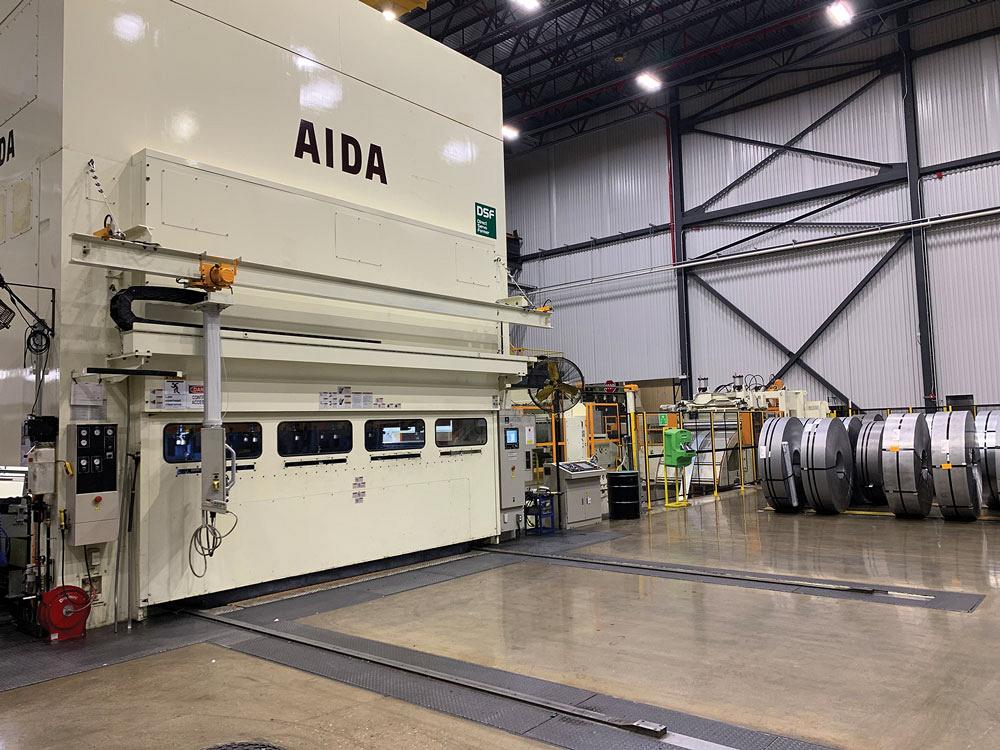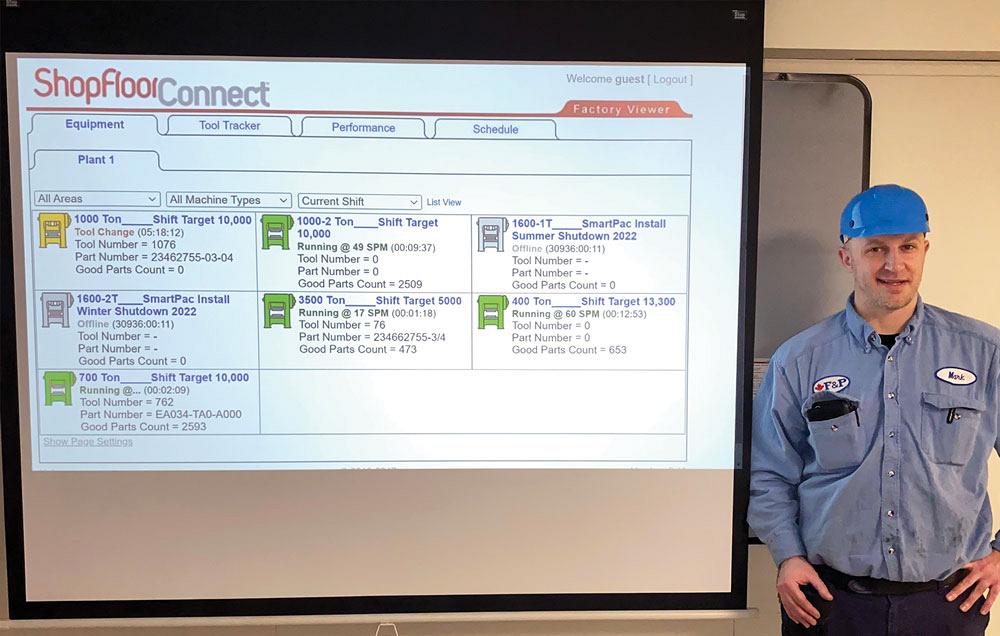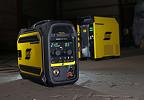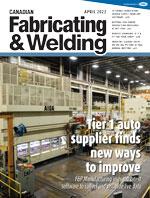Associate Editor
- FMA
- The Fabricator
- FABTECH
- Canadian Metalworking
Tier 1 auto supplier finds new ways to improve
F&P Manufacturing uses the latest software to collect and visualize live data
- By Lindsay Luminoso
- May 12, 2022
- Article
- Automation and Software
What initially started as an afterthought turned out to be a huge benefit for F&P Manufacturing Canada.
The Tottenham, Ont.-based Tier 1 supplier has been stamping, forming, welding, and assembling parts for the automotive industry for the better part of four decades Producing more than 58 million components annually across 18 different current vehicle models, F&P has made a name for itself in the automotive manufacturing world. It currently supplies suspension components, cradle assembles, subframes, and other components to several major car OEMs.
The company has a second location in Stratford, Ont., and Japanese parent company Ftech Inc. has plants in Troy, Ohio; Rome, Ga.; and two facilities in Mexico.
Canadian Operations
The Tottenham location is broken down into two plants with a combined building space of 41,000 sq. m across a 433,000-sq.-m property. The main plant offers metal forming, hydroforming, welding, and e-coat. The second plant is strictly focused on producing modular assemblies.
On the metal forming side, the shop offers progressive and transfer stamping, hydroforming, CNC tube bending, and laser cutting. On the welding side, F&P does a lot of MIG welding and several different types of resistance welding. The welding shop is highly automated, with more than 350 robots.
"We run a three-shift operation currently," said Mark Kane, metal forming technical manager at Tottenham. "We strongly believe in just-in-time manufacturing. It’s a very fast-paced environment and some areas do work more than the three-shift operation, depending on the demand and supplies."
One of the things F&P prides itself on is its commitment to continuous improvement. The plant is always on the lookout for the latest equipment and new technologies that can make its manufacturing process more efficient.
Over the years the shop has invested heavily in new stamping presses. It currently operates seven AIDA stamping presses, three of which are servo presses, ranging from 400 to 3,500 tons.
"We are always looking forward, especially when it comes to new technology," said Kane. "On the stamping side of things, we have always sought out the latest features and equipment upgrades. For example, we purchased a 1,000-ton progressive servo press and a 3,500-ton servo transfer press from AIDA, which were the first of that size in North America for the company. It was a big deal. But beyond that, we also try to ensure that we are optimizing efficiencies and machine usage for better overall production."
Recently, some of the shop’s presses required an upgrade to a clutch/brake safety system. After some review of available press safety systems that were on the market, F&P decided to go with the SmartPAC press automation controller from Wintriss Controls Group, Acton, Mass., and its distributor Veugen Integrated Technologies (VIT), Cambridge, Ont. With this upgrade, F&P initially decided to just get the die protection and tonnage monitoring options. But when the company realized that Wintriss offered ShopFloorConnect (SFC) overall equipment effectiveness (OEE) and data collection software that would integrate with the existing systems and collect and visualize live data from each SmartPAC, F&P acquired that as well.

At its 41,000 sq. m facility in Tottenham, Ont., F&P Manufacturing has spent the last few years investing in new stamping presses. It currently operates seven AIDA stamping presses, three of which are servo presses, ranging from 400 to 3,500 tons. Images: F&P Manufacturing Canada
"We decided to invest in SFC with the upgrades of our presses, and at the time, we really weren’t fully aware of the features and capabilities of the production efficiency system," said Kane. "It was kind of an afterthought of the overall upgrade. Once we talked with VIT and Wintriss to review the functionalities of the system, we quickly realized the benefits and potential it could bring, and we wanted to embrace using it."
Fast-forward three years, and F&P is still finding new ways that the SFC system can help improve its manufacturing process.
ShopFloorConnect
F&P worked with its IT department to set up remote servers and to give SFC access. The shop was impressed with how Wintriss helped set up the system and the necessary databases, and that service is one reason F&P continues to maintain a contract with them.
"Anytime there’s a concern, we contact them and the support is fantastic," said Kane.
At first the shop was focused on machine monitoring and had displays set up in the offices to show how the equipment was running. However, it wasn’t until the company realized that the system offered downtime tracking notifications, OEE reporting, and downtime analysis reports that it really began to understand how SFC can be used to enhance day-to-day operations.
"It’s a powerful tool for getting you the information you need as long as you use it properly," said Kane. "So far it has helped track equipment efficiencies, collect data for maintenance and troubleshooting, and helped us investigate points of failure in the process. It is real-time, accurate data. Operators can make mistakes when manually reporting, but the system eliminates that. For our stamping process, we use die protection and tonnage monitoring to track everything. We can identify ways a die fails and if there was a tonnage point failure."
F&P has always seen new technology as an opportunity to improve processes and efficiency, and SFC is a great example of that.
"Being able to monitor, track, and see all the downtime is great," said Kane. "But for us, it’s the overall visual management of the shop floor, knowing if the tool is running slow, or what’s going on that has given us a great advantage. It has really made us much more aware of what’s happening on the shop floor without actually needing to be on the shop floor."
Production planning is another way that the system is helping F&P make informed decisions. SFC can identify how equipment is running and how long it takes to run a job. Because of this, scheduling is easier and more accurate. It can identify if there is a missed shot on a die and even track if sensors have been disabled and why. It has provided management with a snapshot and timeframe of what’s happening on the shop floor, as well as the ability to identify various aspects of the stamping process specific to the equipment.
"Currently we only have this on our stamping equipment," said Kane. "We bought a system for our hydroforming area that is still in the process of being set up. We decided to go with SFC for this department for its OEE and downtime tracking. However, with stamping we also want to start using the system to cross-monitor dies between presses. We have progressive and transfer dies going back and forth between the presses. At the moment we don’t collect data when the dies move around, so we’d like to use SFC’s alphanumeric system to label, identify, and track [each die], regardless of the press it’s on."

Mark Kane shows how the company displays ShopFloorConnect current machine status and production efficiency in real time on the shop floor and facility’s offices.
F&P previously used a custom tool tracker system and looks forward to implementing the latest version of SFC that has some of the features, such as tooling images. When it comes to die management, having images that can identify problems will make it easier for the team to maintain the tooling. The shop has invested in the SFC tool tracker function as well, which it says is a very cost-effective way to keep track of the tools.
"SFC has helped us keep track of efficiencies and downtime, but there is so much more to it," said Kane. "We certainly don’t use it to its full potential at the moment, but we are definitely looking forward to future utilization, specifically more on the report and scheduling sides. Any time we invest in a new piece of equipment, such as a new press, we’ve asked for SFC to be integrated with the SmartPAC press automation controller install. The integration of SmartPAC with SFC made it much easier, especially with displays and interactivity in the data."
Currently the company is working on upgrading the system to the next-gen version, SFC 6. In the meantime, it’s also working on sending data and communications back to Ftech, giving its parent company access to SFC’s data to help monitor production and make informed business decisions. In-house, SFC is being used to optimize stamping operations, maintain quality standards, and correct inefficiencies to ensure that the shop continues to provide high-quality automotive suspension and cradle assemblies to its customers.
A snapshot of today’s auto manufacturing needs
F&P has been a dedicated supplier of automotive components since it was established in 1986. It has grown exponentially over the years, both physically and technically.
Today, beyond the traditional automotive manufacturing processes such as stamping and welding, F&P has grown to include an R&D division—located in the U.S.—that provides model development for complex automotive assemblies from concept to mass production. Through the design process, F&P is able to optimize the production process for the components using the latest technologies like CATIA V5, space analysis, forming analysis, and RobCAD.
From a quality perspective, the company is IATF-16949-certified. It has a quality assurance test lab with functional testing capabilities that can provide process validation during development and production stages. Tests include endurance and static testing of chassis, cut and etch testing for weld quality, and dimensional verification and analysis of product and inspection gauges.
"We’ve always believed that investing in the latest technologies and constantly looking for ways to improve is good practice," said Kane. "We strive to maintain an open atmosphere employing technical individuals with well-rounded and diverse skill sets. We don’t want someone to be a master of just one thing, but rather workers who can contribute and help lift the team up in a number of different ways."
Right now, and for the past few years, the industry has been challenged by labour shortages. However, the past year also has been marred by a semiconductor shortage that has forced many automotive OEMs to shut down production for periods at a time.
"We are hoping as a company that the labour issues are resolving," said Kane. "We are also seeing a shrinking of supply shortages, which will allow us to go back to a normal production. Customer stabilization is also important to ensure that the industry can get back on track, which we feel is very close. Things are ramping up every day, and we are definitely seeing a lot of demand. We think we are moving beyond the big challenges, but we also recognize that automotive manufacturing and the technology are rapidly changing and evolving. It can be difficult to keep up sometimes, but we are up for this challenge."
Associate Editor Lindsay Luminoso can be reached at lluminoso@canadianfabweld.com.

ShopFloorConnect allows operators to enter downtime reasons for identifying any issues and improving OEE.
F&P Canada, fandpmfg.com
Wintriss Controls Group, www.wintriss.com
Veugen Integrated Technologies, vit-ltd.com
About the Author

Lindsay Luminoso
1154 Warden Avenue
Toronto, M1R 0A1 Canada
Lindsay Luminoso, associate editor, contributes to both Canadian Metalworking and Canadian Fabricating & Welding. She worked as an associate editor/web editor, at Canadian Metalworking from 2014-2016 and was most recently an associate editor at Design Engineering.
Luminoso has a bachelor of arts from Carleton University, a bachelor of education from Ottawa University, and a graduate certificate in book, magazine, and digital publishing from Centennial College.
Related Companies
subscribe now


Keep up to date with the latest news, events, and technology for all things metal from our pair of monthly magazines written specifically for Canadian manufacturers!
Start Your Free Subscription- Trending Articles
CWB Group launches full-cycle assessment and training program

Achieving success with mechanized plasma cutting

3D laser tube cutting system available in 3, 4, or 5 kW

Brushless copper tubing cutter adjusts to ODs up to 2-1/8 in.

Welding system features four advanced MIG/MAG WeldModes

- Industry Events
MME Winnipeg
- April 30, 2024
- Winnipeg, ON Canada
CTMA Economic Uncertainty: Helping You Navigate Windsor Seminar
- April 30, 2024
- Windsor, ON Canada
CTMA Economic Uncertainty: Helping You Navigate Kitchener Seminar
- May 2, 2024
- Kitchener, ON Canada
Automate 2024
- May 6 - 9, 2024
- Chicago, IL
ANCA Open House
- May 7 - 8, 2024
- Wixom, MI
















